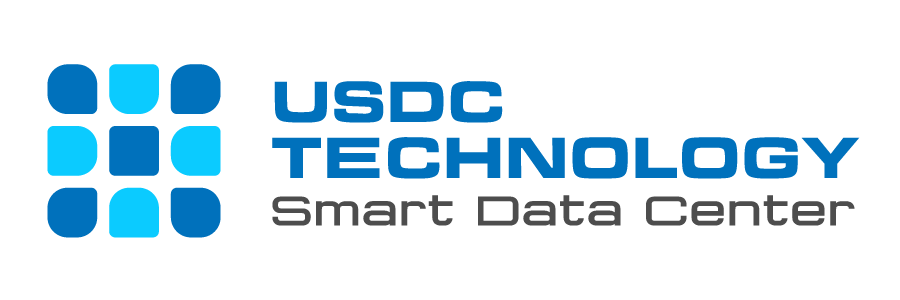The data requirements for contemporary businesses are on a constant upward trajectory. This surge in demand is driving a corresponding increase in the need for data centers globally. In the midst of this trend, it is essential to stay attuned to the ongoing innovations in and around data centers. Below, we delve into the top 10 technology trends that are set to influence the design, management, and functionality of data centers in 2024 and beyond:
1. Virtualizing Servers for Enhanced Efficiency
In a concerted effort to alleviate infrastructure complexities, numerous managed service providers (MSPs) and data centers are transitioning to Software-Defined Data Centers (SDDCs). Within the SDDC framework, virtualization technologies replicate computing capabilities and storage in software form.
Server virtualization, a pivotal component of this approach, enables data centers and service providers to consolidate multiple users onto a single server by partitioning servers. This departure from the traditional method of assigning one server per user proves to be more efficient. Virtualization also promotes scalability as workloads are distributed across multiple servers.
2. Edge Computing
With the proliferation of connected devices, centralized data processing faces challenges of inefficiency and economic viability. Enter edge computing, a revolutionary data center architecture that leverages the processing power of devices at the network’s edge to handle actions and requests.
Edge data centers effectively reduce latency and enhance the overall performance of interconnected IoT (Internet of Things) devices, resulting in minimized service interruptions for users. Considered one of the most significant technological advancements for data centers, edge computing is poised for a strategic breakthrough in 2024. Major players such as AWS (Amazon Web Services) are actively moving towards deployment, equipped with the necessary resources to influence the evolution of edge computing.
3. Hybrid Cloud
In a quest to leverage the advantages of both public and private clouds, an increasing number of companies are embracing hybrid cloud deployments. The private cloud provides superior control and security, while the public cloud offers extensive computing capabilities. Through a hybrid cloud architecture, service providers can retain and oversee critical data and resources on secure private servers, seamlessly transitioning them to a public server as needed for diverse processing requirements.
4. Revolutionizing Data Centers with Artificial Intelligence (AI)
The unparalleled impact of Artificial Intelligence (AI) on data center efficiency cannot be overstated. Advanced AI programs play a pivotal role in optimizing data center performance. Employing predictive analytics, AI identifies potential areas of concern and correlates them with various processes and energy consumption.
Google achieved a remarkable 40% reduction in cooling costs for its data center by implementing AI-driven control over the cooling infrastructure. AI provides facility managers with a comprehensive overview of the health of all data center components, enabling proactive measures such as timely repairs or replacements for components that require attention.
5. Automation
Extraordinary circumstances, such as the COVID-19 pandemic, have hastened the embrace of automated processes and remote management. Troubleshooting network and infrastructure inefficiencies is now seamlessly automated. In the pursuit of heightened productivity and efficiency with minimal human intervention, data center automation is set to play a pivotal role in the future.
6. Intelligent Monitoring
The trajectory of intelligent monitoring is set to ascend in the future. Companies are increasingly adopting intelligent, automated, and real-time monitoring methods, accessible through simple mobile applications. This instantaneous information enables proactive prediction of requirements and identification of potential problematic areas.
7. Hyperscale Data Centers
As data volumes continue to surge, data centers are evolving into highly scalable entities known as hyperscale data centers. These facilities possess the capability to rapidly scale up to meet escalating demands. Unlike traditional approaches where the entire server must be replaced, hyperscale data centers allow companies to replace single components, resulting in cost reduction and minimized downtime.
Furthermore, the modular addition of components empowers companies to swiftly scale up operations, providing users with unparalleled flexibility. The advent of hyperscale data centers is poised to exert a transformative influence on all facets of data centers in the coming years.
8. The 5G Revolution
The long-anticipated arrival of the fifth-generation mobile communication network, known as 5G, is now a reality. 5G brings with it faster data speeds and prompt access, further fortifying the case for edge computing.
While upgrading network components, software, and hardware to align with the 5G network entails costs, the promised benefits outweigh these expenses. The era of 5G is set to usher in a new chapter, enhancing data center capabilities for improved connectivity and efficiency.
9. Advancing Security Measures – Chip-level Security
The widespread connectivity of the internet has given rise to heightened security concerns, particularly regarding cyberattacks. To address these mounting challenges, companies are actively exploring innovative solutions to fortify data centers. Prominent tech giants, including Google, are leading initiatives such as OpenTitan, focused on developing trustworthy chip designs tailored for data centers. Chip-level security, as envisioned by Google, aims to ensure the integrity of both hardware and software components, maintaining their intended, incorruptible state. This system guarantees that critical components boot securely with verifiable, authorized codes, protecting against low-level malware. Undoubtedly, chip-level security stands out as a pivotal data center trend deserving close attention.
10. Sustainability in Action – Green Data Centers
A green data center, characterized by maximum energy efficiency and minimal environmental impact, represents a significant stride towards sustainability. Investors and stakeholders in data centers are increasingly dedicated to implementing solutions that align with climate resilience, actively contributing to the green energy revolution. This commitment underscores the evolving importance of green data centers in promoting environmentally responsible practices within the data center industry.
Like every facet within the IT realm, data center technologies are undergoing rapid transformations aimed at achieving highly optimized and effective systems. As a business owner, it is crucial for you to stay abreast of these technological changes and emerging trends. After all, these developments are poised to mold the future landscape of data centers, and staying informed will be instrumental in ensuring the continued efficiency and competitiveness of your business in the evolving digital landscape.
Media Contact
Universal Smart Data Center Technology
Phone: (+84) 28 73080708
Email: info@usdc.vn


